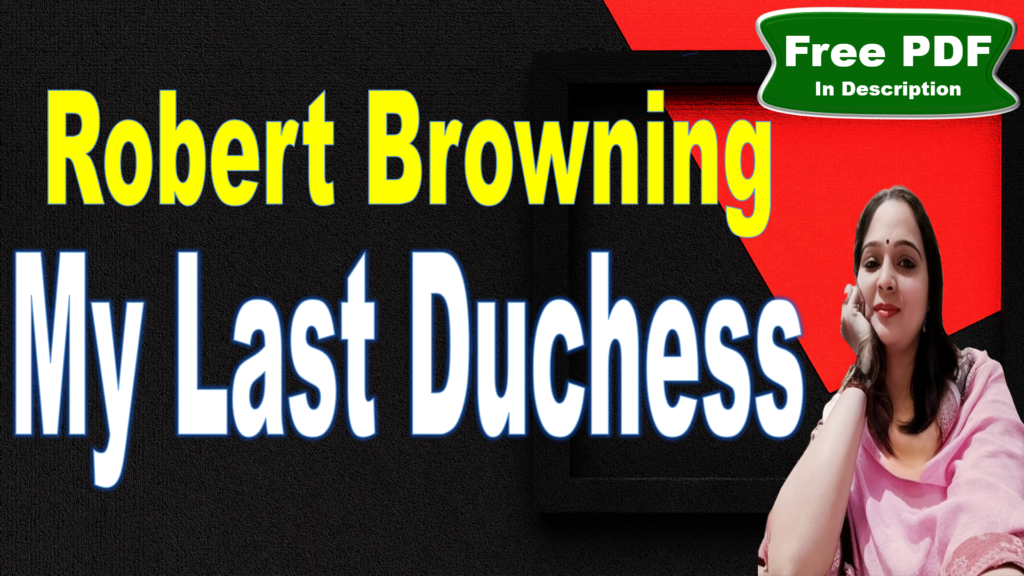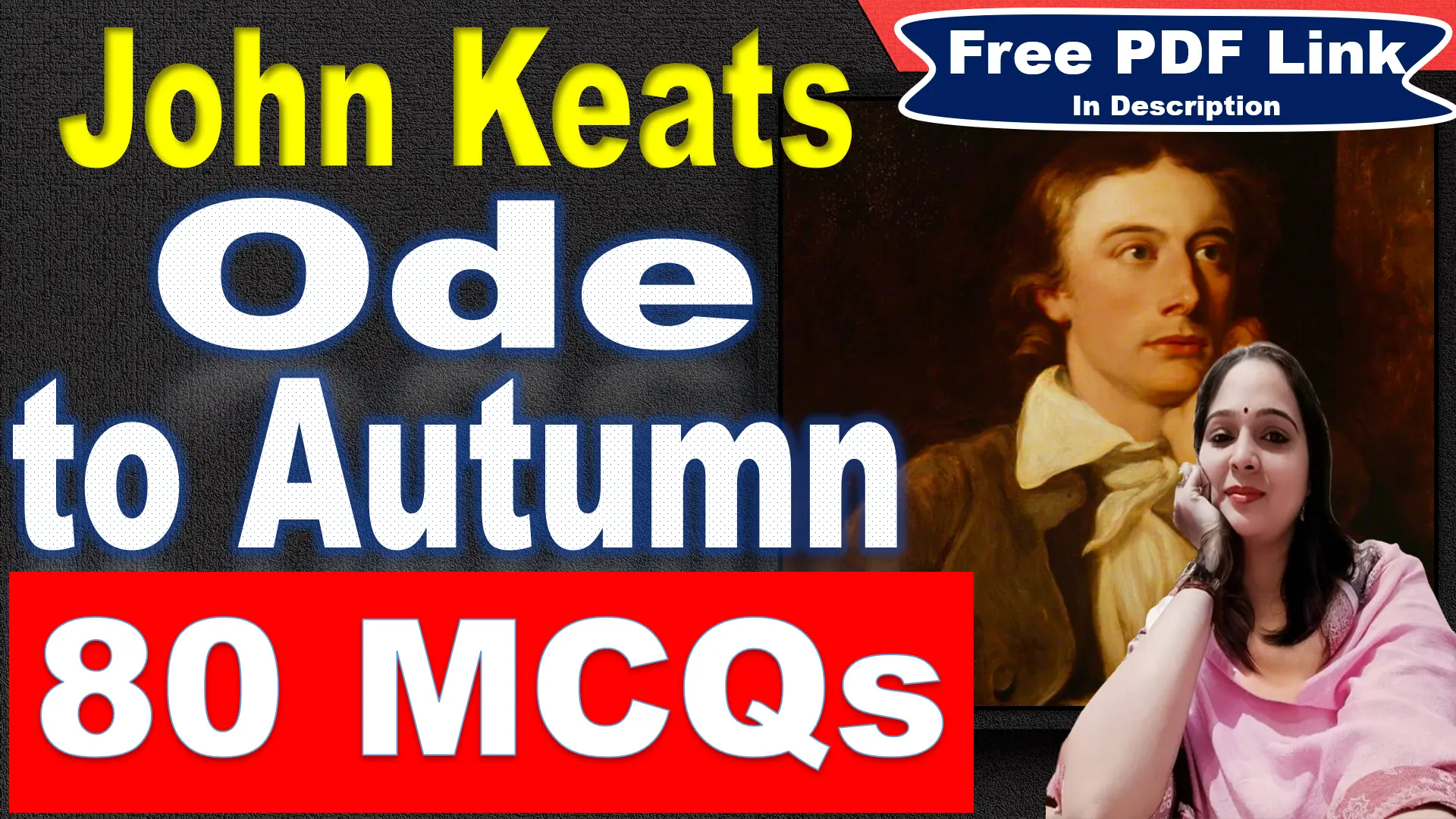
My Last Duchess Quesions Answers
Very Short Answer Questions
Who is the author of “My Last Duchess”?
Robert Browning.
What literary form does “My Last Duchess” take?
A dramatic monologue.
Who is the speaker in the poem?
The Duke of Ferrara.
Who is the Duke speaking to in the poem?
An emissary or representative of a Count.
What is the subject of the portrait in the poem?
The Duke’s late wife, the Duchess.
Who painted the portrait of the Duchess?
Fra Pandolf.
What is the Duke’s complaint about the Duchess?
She was too friendly and easily pleased.
What does the Duke mean when he says, “I gave commands”?
He likely ordered the Duchess’s death.
What does the portrait symbolize in the poem?
The Duke’s control over the Duchess, even in death.
What time period is the poem set in?
The Renaissance.
What is the rhyme scheme of the poem?
Rhymed couplets (AA, BB, CC…).
What poetic device does Browning use frequently in the poem?
Enjambment.
What is the Duke negotiating at the end of the poem?
A new marriage with the Count’s daughter.
What does the Duke point out as they leave the gallery?
A statue of Neptune taming a sea-horse.
What quality of the Duchess does the Duke disapprove of the most?
Her lack of exclusivity in showing appreciation.
What does the Duke mean by “spot of joy” in the Duchess’s cheek?
A blush caused by her interaction with others.
What does the curtain over the portrait symbolize?
The Duke’s control over who can view the Duchess.
What kind of smile did the Duchess have according to the Duke?
A smile given too freely to everyone.
How does the Duke view his “nine-hundred-years-old name”?
As a prestigious gift that the Duchess did not fully appreciate.
What is the main theme of “My Last Duchess”?
The theme of power, control, and the objectification of women.
Short Answer Questions
Who is the speaker in “My Last Duchess,” and what is he describing?
The speaker is the Duke of Ferrara, describing a portrait of his late wife, the Duchess. He shows the portrait to an emissary, sharing his thoughts about her behavior and their relationship. His monologue reveals his possessiveness and controlling nature.
What is the Duke’s attitude toward the Duchess’s behavior?
The Duke disapproves of the Duchess’s friendly and appreciative nature toward everyone. He feels that she should reserve her smiles and joy only for him. He criticizes her for being too easily pleased by simple things, interpreting her kindness as a lack of respect for his “nine-hundred-years-old name.”
What does the Duke mean when he says, “I gave commands; Then all smiles stopped together”?
This line suggests that the Duke ordered the Duchess’s death. The phrase “all smiles stopped together” implies that her joyful and friendly demeanor came to an abrupt end, likely because she was killed. The Duke’s cold tone reveals his authoritarian attitude toward his wife.
How does Browning use dramatic monologue in “My Last Duchess”?
Browning uses dramatic monologue to let the Duke reveal his character indirectly through his own words. The Duke’s speech to the emissary exposes his arrogance, jealousy, and obsession with control. The dramatic monologue allows readers to see the Duke’s personality without direct narration or dialogue.
How does the Duke’s control extend beyond the Duchess’s life?
The Duke continues to control the Duchess even after her death by keeping her portrait hidden behind a curtain that only he can draw. This act symbolizes his desire to possess and control her image, preventing others from interacting with or admiring her as they did when she was alive.
What role does art play in the poem?
Art serves as a tool of control for the Duke. The portrait of the Duchess immortalizes her, but the Duke controls who gets to see it. The art becomes a reflection of his power and possessiveness, as he tries to capture her beauty and spirit while silencing her voice.
What is the significance of the Duke’s reference to Fra Pandolf?
The Duke repeatedly mentions the name of the painter, Fra Pandolf, to suggest that the Duchess’s beauty and expressions were captured by a famous artist. It also hints that the Duchess’s interactions with Pandolf may have caused the Duke’s jealousy, as he assumes any kindness from her could be interpreted as flirtation.
What does the Duke’s mention of Neptune taming a sea-horse symbolize?
The statue of Neptune taming a sea-horse symbolizes the Duke’s desire for power and dominance. Just as Neptune controls the wild sea-horse, the Duke tries to control the Duchess and others around him. The statue reflects the Duke’s belief in his own superiority and authority.
How does Browning create a contrast between the Duke’s speech and his actions?
Browning contrasts the Duke’s calm, polished speech with the dark reality of his actions. The Duke speaks elegantly and politely, but his words reveal a sinister truth—his jealousy, possessiveness, and possible role in the Duchess’s death. This contrast adds complexity to his character and heightens the dramatic tension.
What is the theme of power and control in “My Last Duchess”?
The theme of power and control is central to the poem. The Duke’s desire to dominate the Duchess, both in life and death, reflects his authoritarian nature. He objectifies her as a possession, not allowing her any autonomy, and uses his social status and power to justify his actions, showing the corrupting influence of absolute power.





